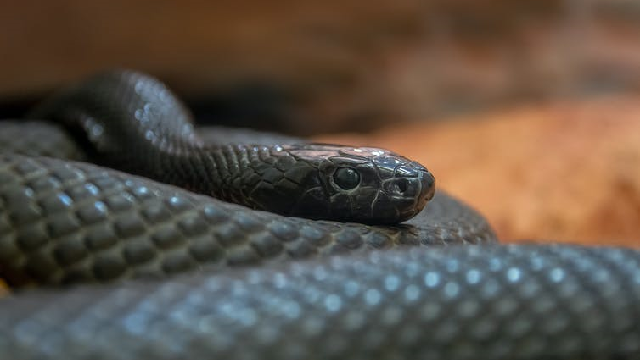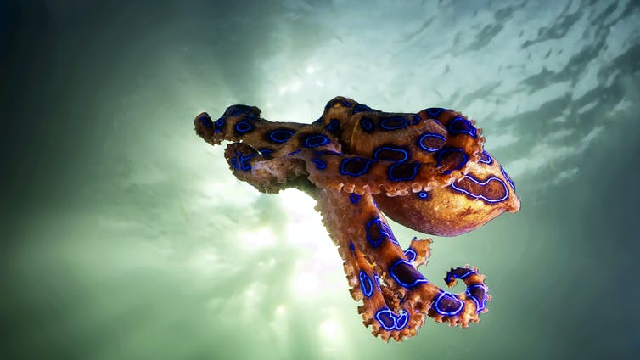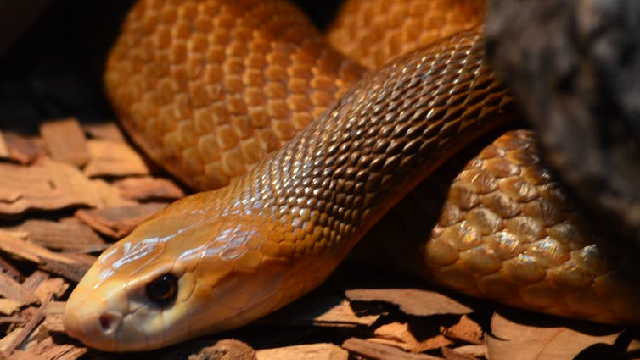Why do so many dangerous animals live in Australia? – Lucy, aged seven, Kent, UK
Use this article with Biology and Earth and Space students in years 3-10 who are investigating the features of animals, the changing Earth and evolution.

The world’s most venomous snake, the inland taipan, is only found in Australia. Lubos Houska/Shutterstock
Why This Matters: Australia has a reputation for having lots of dangerous animals. It’s time to find out if this reputation is worthy.
There are lots of dangerous animals in the world. Some are dangerous because they spread disease, like mosquitoes that can carry malaria. Others are dangerous because they have deadly venom, like some kinds of snakes.
Interestingly, Australia only has 66 venomous species, whereas Mexico has 80 and Brazil has 79. Yet Australia has the ones with the most deadly venom. The box jellyfish, marbled cone snail, blue-ringed octopus and stonefish are in the top ten most venomous animals of the world, and all live in Australia.

The blue-ringed octopus is one of the world’s most venomous sea creatures. YUSRAN ABDUL RAHMAN/Shutterstock
Even more impressive, Australia is home to 20 of the 25 most venomous snakes in the world, including all of the top 11. The world’s most venomous snake, the inland taipan is found nowhere else on Earth. It is also called the fierce snake, and carries enough venom in a single bite to kill around 250,000 mice.
But why does Australia have so many animals that are highly venomous? To answer this question, let’s look at how Australia ended up with so many types of dangerous snake.
Back in time
First, we need to go back 180 million years. At this time in history, Africa, South America, India, Australia and the Antarctic were all joined together. This land mass gradually split apart, with Africa and South America breaking off first, followed 40 million years later by India and Madagascar. Australia and Antarctica finally broke apart around 100 million years ago.
Today, venomous snakes are found in all of these places – apart from Antarctica, where it is too cold for them to live. On the original combined land mass, it is thought that there was a population of ancestral snakes that was venomous. These were separated when the land masses broke apart.
Whereas other continents currently have several different types of snakes, Australia’s snakes belong almost entirely to one group, called elapids. These are a group of snakes that inject their prey with venom from hollow, fixed fangs.
Other continents have several ancestors that may or may not have been venomous, but Australia’s 140 terrestrial and 30 marine snake species all evolved from one venomous ancestor.
Evolution
Imagine a snake that uses venom to kill its prey. If all snakes had venom of the same potency, they would only be able to kill prey of a certain type or size. But there is usually a difference in the strength of venom each snake has. This variety is like how people are different heights, or have different sized feet.
So the snake with venom that is slightly more potent will be able kill prey that other snakes cannot. It will be able to eat more food – enough to survive and reproduce, passing the potent venom on to its children. These snakes would be able to survive better than the ones with less strong venom, so having the potent venom becomes more and more common. This is what we call the process of evolution.

The coastal taipan snake. stefan seiden/Shutterstock
As every meal counts, especially as some snakes live in hot, dry environments where there isn’t much prey, venom needs to be extremely effective to ensure that prey do not escape or harm the snakes. And as prey evolve ways to counter the effects of the venom, the snakes evolve ways to make their venom even more potent.
It is likely that Australia has the most dangerous animals because their only ancestors were also dangerous, though not as potent. Yet very few Australian animals actually cause deaths. So even though Australia has the most deadly species in the world, it is unlikely that you will be harmed by them, especially as they only bite humans in self-defence.
Authored by Louise Gentle, Senior Lecturer in Wildlife Conservation, Nottingham Trent University.
This article is republished from The Conversation under a Creative Commons license. Read the original article here.
 Curious Kids is a series by The Conversation that gives children the change to have their questions about the world answered by experts. If you have a question you’d like an expert to answer, send it to [email protected].
Curious Kids is a series by The Conversation that gives children the change to have their questions about the world answered by experts. If you have a question you’d like an expert to answer, send it to [email protected].
We won’t be able to answer every question, but we’ll do our very best.
When sending in questions to Curious Kids, make sure you include the asker’s first name, age and town or city. You can:
- email [email protected]
- tweet us @ConversationUK with #curiouskids
- DM us on Instagram @theconversationdotcom





